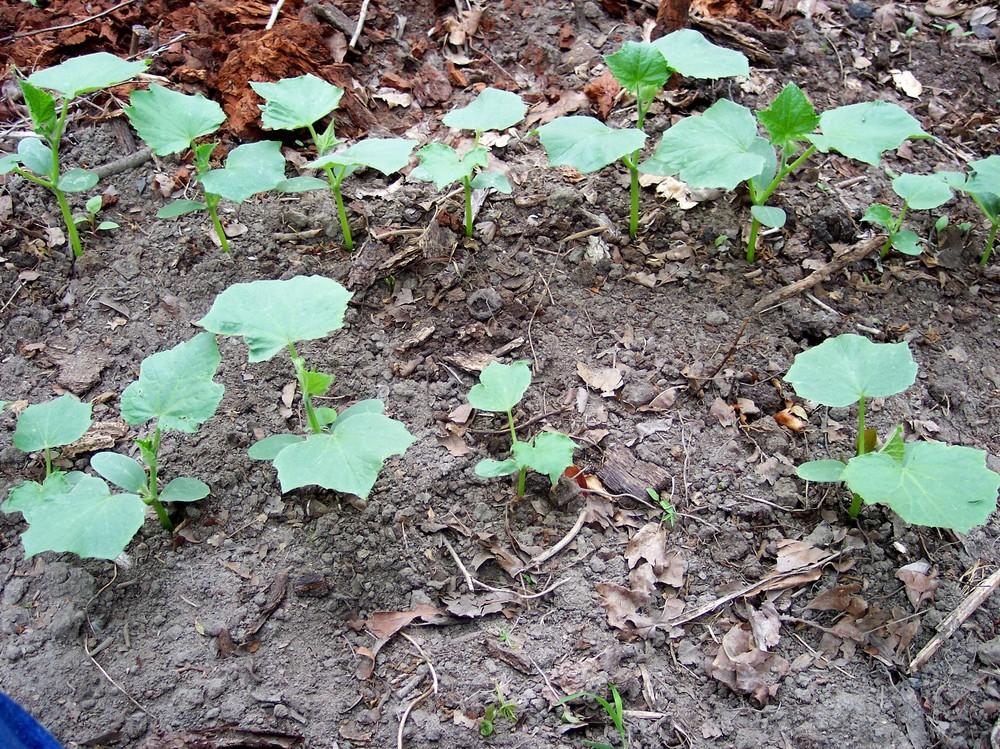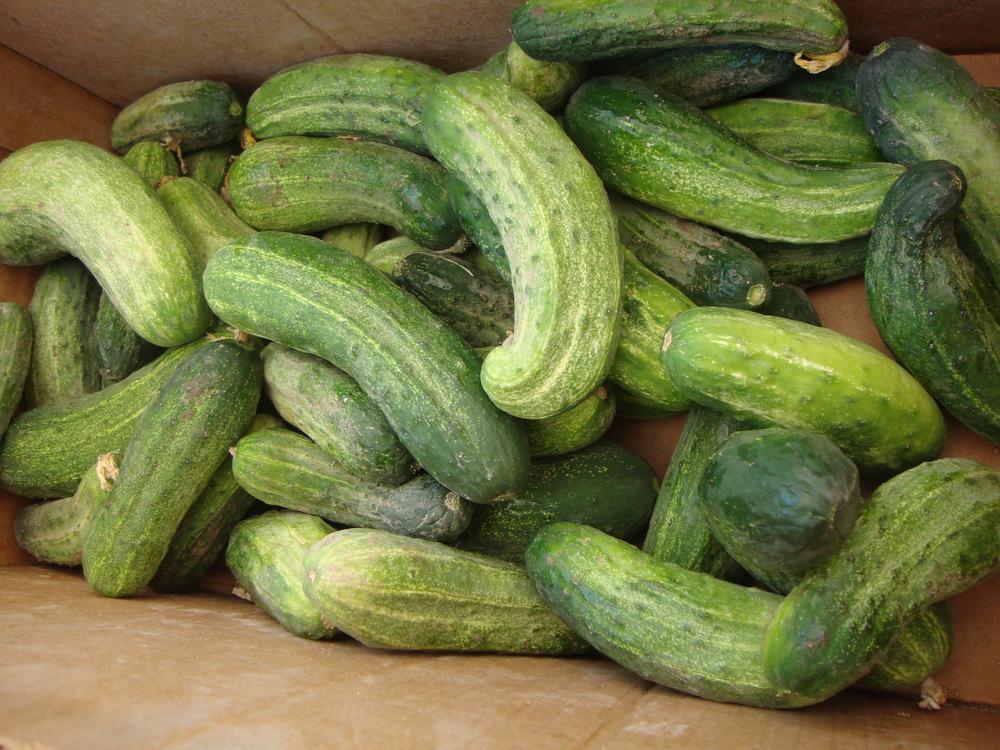Growing Cucumbers from Seed
Starting Cucumbers:
- Cucumbers are extremely susceptible to frost, for an early crop, start indoors 1 week before your last frost date. To find your last frost date go to our Frost Date Calendar: /a/h/frost-dates/
- Cucumber seeds germinate in 7-14 days. Ideal temperatures for cucumber sprouting is 70-90 F.
- Transplant when your plants are about 3 weeks old. If left in pots too long they can become stunted, and will grow very slowly.
- For direct sowing, wait until the soil temperature is at least 65 degrees, or two weeks after the last spring frost. Plant the seeds in 1 foot mounds, spaced 2.5 feet apart. Each mound should have 5 seeds. Sow seeds ½ inch deep.

Growing Cucumbers:
- Once the plants are 3-4 inches tall, thin the mounds to 1 plant in each mound, leaving the strongest plant.
- Cucumbers require abundant watering, and rich soil. Make sure to water frequently, mulching can make water retention easier, and suppress weeds.
- Some afternoon shade is beneficial during the hottest parts of the summer
- Radishes are a great companion plant for cucumbers.
- Trellis cucumbers to save space, and to make maintaining and harvesting easier.
- Harvest the fruits frequently to maintain production.
- Cucumbers will peak quickly and die, so it is best to practice succession planting cucumbers every two weeks until late summer to enjoy consistent harvests all summer.

Saving Seeds:
- Cucumbers are annuals and as such, they will set fruit and produce seed in their first year.
- Cucumbers rely upon insects to pollinate their flowers; for this reason it is best to isolate each variety by 1⁄2 - 1 mile from other varieties to avoid cross-pollination, caging or bagging the flowers can have a similar effect, but this requires hand pollination of the flowers.
- Cucumbers have male and female flowers, so pollination occurs easily without degrading the vigor of the seed stock. (Many other plants need to pollinate flowers from a separate plant). Just a few plants will produce lots of healthy seeds.
- For optimal seed collection, select the best plants (Disease Free, most Flavorful, etc), and allow the cucumber to mature on the vine past its eating state, all the way to the end of the growing season. The Fruits will turn orange or yellow when they are fully ripe, and ready to harvest seeds.
- Remove the seeds, and allow them to ferment in a bucket for 3 days with a small amount of warm water. This allows removal of the get coating surrounding the seeds. Stir the bucket daily. This fermentation kills any viruses, and separates the good and bad seeds. The good seeds will sink to the bottom, and any bad seeds and pulp will rise.
- After 3 days pour off the pulp, mold, and bad seeds, rinse off the good seeds, and spread them on a screen or paper towel to allow them to dry thoroughly.
- Once completely dry, your seeds can be stored in an envelope or jar.
- Placing the seeds in the freezer for two days can kill any residual pests
- For long term storage, store the seeds in a cool dry place, and they can remain viable for up to 10 years.

